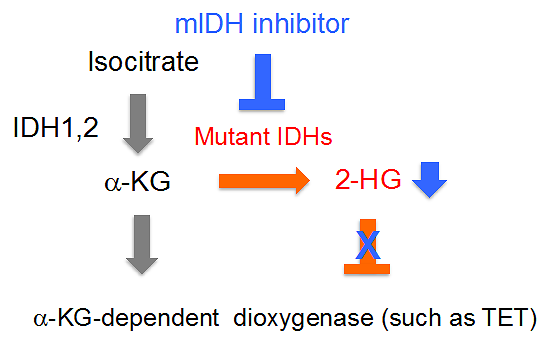Seminar "Evolution of cancer stem cells and therapeutic targets in acute myeloid leukemia."

Date
Location
Description
Dear all,
Cell Signal Unit would like to invite you to a seminar by Prof. Issay Kitabayashi.
We look forward to seeing many of you there.
Speaker: Prof. Issay Kitabayashi
National Cancer Center Research Institute, Tokyo
Title: Evolution of cancer stem cells and therapeutic targets in acute myeloid leukemia
Abstract: Acute myeloid leukemia (AML) is an aggressive malignancy of hematopoietic cells with a poor clinical outcome. A number of genomic abnormalities and mutations have been identified in AML. Some of the fusion genes such as MLL-fusions and MOZ-fusions can transform hematopoietic progenitor/stem cells into AML stem cells as single genes. However, serial acquisition of mutations occurs in self-renewing hematopoietic stem cells (HSCs) is required to establish AML stem cells in other cases. Mutations in the specific genes such as NPM, isocitrate dehydrogenase (IDH) 1 and 2 (IDH1/2), DNMT3A and FLT3 frequently occur simultaneously in AML patients with normal karyotype. We established a mouse AML model by co-transducing the four mutant genes. Conditional deletion of IDH2/R140Q blocked the maintenance of AML stem cells, resulting in survival of the AML mice. Thus, IDH mutants are promising targets for anticancer therapy. IDH1/2 are frequently observed in acute myeloid leukemia (AML), glioma, and many other cancers. While wild-type IDHs convert isocitrate to α-ketoglutarate (α-KG), mutant IDHs convert α-KG to oncometabolite 2-hydroxyglutarate (2-HG), which inhibits a set of α-KG-dependent dioxygenases such as TETs, which converts 5-mC to 5-hmC. We found that IDH2/R140Q reduced the levels of 5-hmC at the loci of differentiation-inducing genes such as Ebf1, Spib and Pax5 and their expression levels and Pax5. Based on these findings, we developed potent and specific inhibitors of mutant IDH1 and tested their effects in the mutant IDH1-dependent AML mouse model, created by introducing four mutant genes including IDH1/R132H. The 2HG level and the number of leukemia cells were dramatically decreased after treatment with the mutant IDH1 inhibitors. These results indicate that IDH1 inhibitors are effective for the treatment for AML.
Host:
Tadashi Yamamoto, Cell Signal Unit
Sincerely,
Kaori Yamashiro
Cell Signal Unit (Yamamoto Unit)
Subscribe to the OIST Calendar: Right-click to download, then open in your calendar application.



